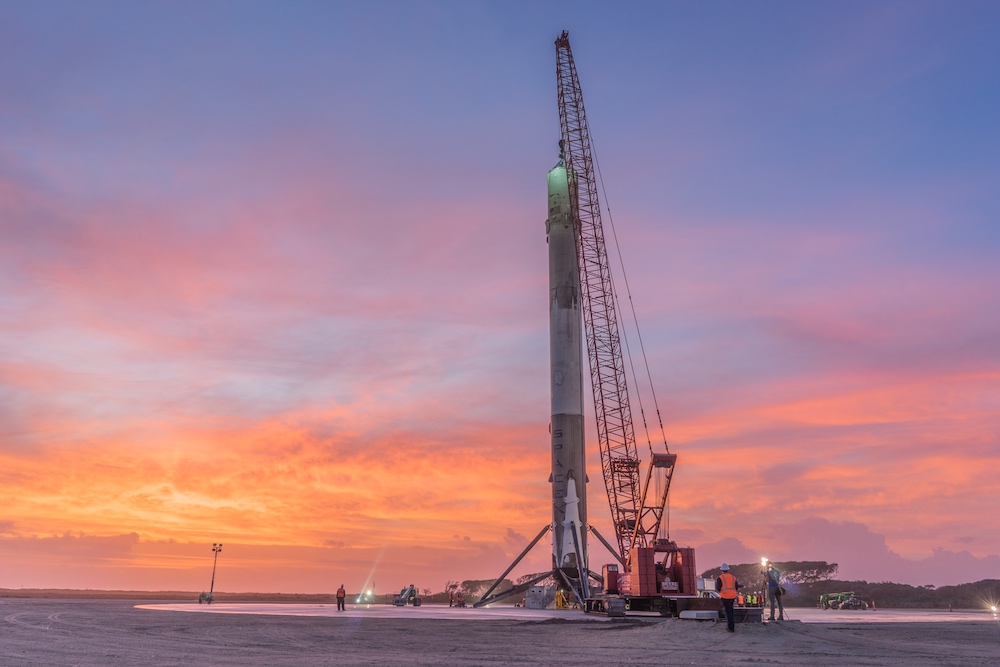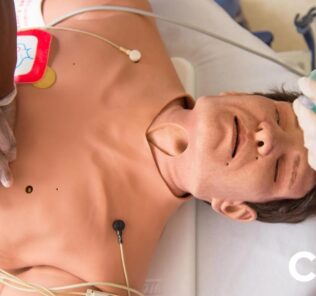Use of Medical Simulation for Space Travel
Medical simulation is a necessary means to train healthcare learners to prepare for real-life scenarios they may encounter in the field. As mixed reality technology expands, the ways in which clinical simulation training can be presented are also expanding, and learners can become better prepared for a wide variety of situations. For example, as space travel opportunities increase and become more frequent, there exists a need to train crew members using medical simulation in space. This HealthySimulation.com article discusses how this practice can be utilized and what healthcare simulation resources can be employed in doing so.
One possible scenario where healthcare simulation could greatly benefit those in space involves astronaut and/or space crew illness. If a member of the crew falls ill in space, they cannot readily see a physician or practitioner. Instead, they must rely on technology to connect them with a medical professional on Earth who can offer insight and treatment recommendations. Then, they will have to receive treatment remotely. In this instance, healthcare simulation can be used to train medical professionals on how to engage with, diagnose, and treat space crew members remotely. Adversely, medical simulation could be used to prepare space crews for how to seek out medical care while deployed, and how to provide self-care or treatments for themselves if necessary.
Another example of how medical simulation for space travel involves could the importance of emergency response preparation. There’s no way to foresee all of the possible scenarios space crew members could come face-to-face with upon launching out of the atmosphere. Yet, basic healthcare simulation training can help them to be better prepared for a number of medical emergencies using training resources like Standardized Patients, manikins, VR headsets, task trainers, and more. For example, Basic Life Support (BLS) healthcare simulation training can educate those in space to recognize signs of sudden cardiac arrest, heart attack, stroke, and more. Upon being able to recognize these conditions, they will be able to determine the most appropriate medical response.
Sponsored Content:
Medical Training for Space Travel
Proving the relevance of this type of forward-thinking, the University of Colorado Anschultz Medical Campus published the article “Medicine on the Moon: Artemis I Launch Sets Stage for Medical Treatment in the Final Frontier” ahead of the Artimis I launch. The article highlighted a School of Medicine assistant professor and alumnus who played key roles in the safe medical preparation of the astronauts scheduled for launch on a 39-day mission to the moon and back.
In an attempt to test every vital element required to get astronauts back to the lunar surface safely and ultimately create a stable habitat on the moon, Artemis has been scheduled for multiple missions in the future. Yet, the article reports that “One of the challenges of heading back to the moon will be keeping astronauts healthy and making sure they have the appropriate medical supplies and training should an emergency happen when Earth is 238,900 miles away.”
Thus, CU Anschutz put together a question and answer session with Benjamin Easter, MD, MBA, assistant professor of emergency medicine at the University of Colorado School of Medicine and deputy element scientist for Exploration Medical Capability at NASA. The discussion also included Chris Haas, MD, MPH, a CU School of Medicine graduate and flight surgeon for NASA at the Johnson Space Center in Houston. Together, Easter and Haas discussed factors to consider when determining the capabilities needed in a medical system on the moon and lessons learned from past missions.
Sponsored Content:
During their Q&A session, the academic leaders were asked about the factors they consider when determining the capabilities needed in a medical system on the moon. The conclusion was that the answer is dependent on the details of each mission. Their response added that hazards of human spaceflight are broken down into five categories: distance from Earth, isolation and confinement, radiation, altered gravity fields, and hostile and closed environments.
Then, the likelihood and consequences of these conditions are then driven by several additional factors. These include the duration of the mission, the design of the spacecraft or habitat, the types of activities the astronauts are undertaking, and the location of the mission. The respondents shared that they use large computational models that account for the mission characteristics to generate an initial estimate of the clinical capabilities needed, which are then refined and finalized by flight surgeons and other clinical experts.
“As we plan for future missions to the moon, we look to data from all prior human spaceflight experiences, but particularly Apollo, as that mission is most similar to future Artemis missions. We also have accumulated a wealth of knowledge from the International Space Station (ISS), where we have learned much more about the effects of spaceflight on the human body over 6- to 12- month-long missions,” explained Easter.
Importance of Medical Space Simulation and Learning
Within their responses, Easter and Haas reference the report on the “Biomedical Results of Apollo” which has already helped to shape the future of “space medicine.’ The report states that “The contribution of Apollo to the biomedical sciences was twofold. First, there was an opportunity to study man performing useful work in the space environment. In dealing with the health issues of a lunar exploration mission, the practice of space medicine became a reality. Second, significant advances were made in life support systems, biotelemetry techniques, and inflight monitoring methodology.” Keeping these medical in mind, healthcare simulation educators can tailor learning experiences to best meet the needs of future crews.
Building upon this idea, the University of Colorado School of Medicine and CU Boulder’s Department of Aerospace Engineering Sciences created a joint MD-MS degree program designed to give medical students the skills they need to advance human spaceflight. As the aerospace field grows, the thought was that this program could emphasize the need for a physician “who’s equipped with a medical degree as well as engineering knowledge” to succeed in human spaceflight.
This pre-mission healthcare simulation learning is incredibly important, especially as the civilian space tourist population grows. For example, the medical officer aboard the SpaceX Inspiration4 mission in September 2022 recalled in an Air and Space Museum article having to treat her crewmates nauseated by space adaptation syndrome inside the Dragon spacecraft.
She shared, “The air bubbles kept floating all around, and you’re trying to chase this medicine down to draw it up,” she says. Not to mention maintaining the “proper positioning so that your patient isn’t floating while you’re trying to administer meds.” Having used medical simulation to train for this experience can certainly help keep future astronauts—from NASA, private companies, and space agencies worldwide—healthy as they venture far from home, the article states.
Learn More About Medical Simulation
Lance Baily, BA, EMT-B, is the Founder / CEO of HealthySimulation.com, which he started in 2010 while serving as the Director of the Nevada System of Higher Education’s Clinical Simulation Center of Las Vegas. Lance also founded SimGHOSTS.org, the world’s only non-profit organization dedicated to supporting professionals operating healthcare simulation technologies. His co-edited Book: “Comprehensive Healthcare Simulation: Operations, Technology, and Innovative Practice” is cited as a key source for professional certification in the industry. Lance’s background also includes serving as a Simulation Technology Specialist for the LA Community College District, EMS fire fighting, Hollywood movie production, rescue diving, and global travel. He and his wife live with their two brilliant daughters and one crazy dachshund in Las Vegas, Nevada.
Sponsored Content:
















